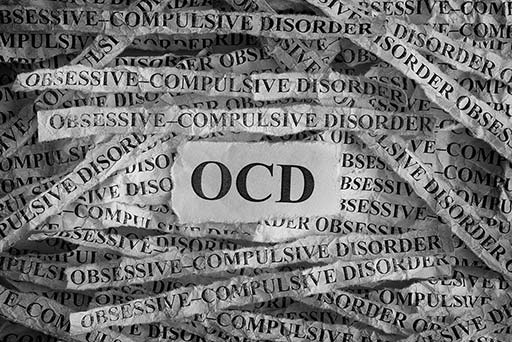How do you handle your own undoing when the person causing you a great deal of stress and anguish is yourself? For those dealing with obsessive-compulsive disorder, or OCD, this conflict is a daily one. The prevalent, persistent, anxiety-centered disorder affects individuals of all ages and backgrounds, causing many to seek out an effective treatment. As with all mental health issues, it is important to understand the causes behind its manifestation when looking to achieve OCD symptom relief. This has brought many individuals with OCD to wonder—is OCD genetic, learned, or both, and what are the optimal ways to manage this condition?

Obsessive-compulsive disorder can be a tricky condition to identify, particularly during its earlier stages. This is due to its tendency to enhance normative concerns: OCD is mainly made up of obsessive thought patterns and the compulsive actions originally meant to assuage them. The four most prevalent themes in OCD are all related to issues we deal with everyday life. They are:
Who amongst us hasn’t been confronted with one or more of these subjects at some point? In fact, protecting oneself and those we care about from illness, accidents, catastrophes, chaos or tragedies, and socially unacceptable situations can all contribute to survival and longevity. Only when these issues balloon into constant fears that gnaw at one’s consciousness, do they become obsessions.
It is at this point that individuals begin to seek any form of relief, however illogical, to sweep their obsessive thoughts out of their minds and calm some of the accompanying anxiety. Enter: compulsive behavior. Acting as a form of self-distraction, repetitive actions usually become part of an individual’s OCD symptoms. At first, they indeed manage to offer some relief: an individual bombarded by, say, thoughts of being hit by a car every time they plan to go outside, finds that throwing their car keys in the air before leaving their house manages to soothe their anxiety surrounding this issue.
But then this seemingly harmless ritual begins adding to this individual’s stress, instead of relieving it: did they remember to throw their keys in the air? Was it done before they left the house, or after? Was it the simple action of throwing and catching them that “purified” the car keys and protected them from an impending accident, or was it an unconscious throwing technique they had been doing that must be repeated for the ritual to “work?” Unsure about such questions, they find themselves repeatedly throwing and catching their car keys, adding frustration, stress, and mental exhaustion to their daily routine.
The American Psychiatric Association (APA) states that 1.2% of the US population has been diagnosed with OCD, with international rates being 1.1%-1.8%. The APA also notes that females are slightly more likely to develop OCD, although males are likelier to develop it during childhood. Findings from the World Health Organization (WHO), on the other hand, have concluded the prevalence of OCD among females and males to be equal.

Studies have uncovered the existence of a genetic predisposition to OCD, with first-degree relatives of an individual diagnosed with OCD twice as likely to develop it themselves. This link dramatically increases in cases where a relative with OCD had developed it during childhood, in which cases the chance of developing OCD yourself jumps to ten times more than for individuals without a first-degree relation with OCD.
Genetics play a significant role in the above associations through the neural activity of certain brain structures, such as the orbitofrontal cortex, anterior cingulate cortex, and striatum implicated in the eventual development of this condition.
The FDA has recognized transcranial magnetic stimulation, or TMS, as a safe and effective treatment for OCD. A form of TMS, called Deep TMS, was the first non-invasive medical device treatment to be FDA-cleared to treat OCD and remains the only one to be FDA-cleared with clinically proven outcome data in treating this condition. Focusing on the anterior cingulate cortex, Deep TMS utilizes electromagnetic fields to safely regulate the neural activities of brain structures such as the anterior cingulate cortex, which have been found to be related to the appearance of OCD.
Further strengthening the centrality of genetics in regard to OCD, recent studies have managed to identify four genes that seem to facilitate this condition, while also highlighting the probable role the striatum plays in it: involved in the decision making process, the striatum helps the brain determine whether a certain situation is safe or threatening. Disruptions to its normal functioning could mark a certain stimuli or context as dangerous, prompting the appearance of OCD-related anxiety.
The significant role that serotonin plays in OCD has also been proven. The mood-elevating neurotransmitter has been shown to affect OCD symptoms, with selective serotonin reuptake inhibitors medication (or SSRIs) that maintain serotonin’s activation shown to alleviate the symptoms of this condition. Due to their proven safety and effectiveness, SSRIs have been FDA-approved to treat OCD.
While genetics themselves are an immutable factor in our physical make up, they are not a fait accompli, marking instead the potential to develop OCD. As with other mental health conditions, it is the interaction between this and other influential components that ultimately decide what disorder, if any, becomes part of our experience.
One of these additional factors, according to the APA’s Diagnostic and Statistical Manual’s fifth edition (DSM-V), is temperament, also known as our general disposition. Specifically, the DSM-V states that internalizing rather than expressing what one is going through, together with an inclination toward behavioral inhibition as a child and experiencing negative emotions more intensely, have all been found to increase the risk of developing OCD.
Environmental factors have also been shown to affect the likelihood of OCD. Studies point to experiencing abuse and other stressful or traumatic events increase the chances of developing OCD.